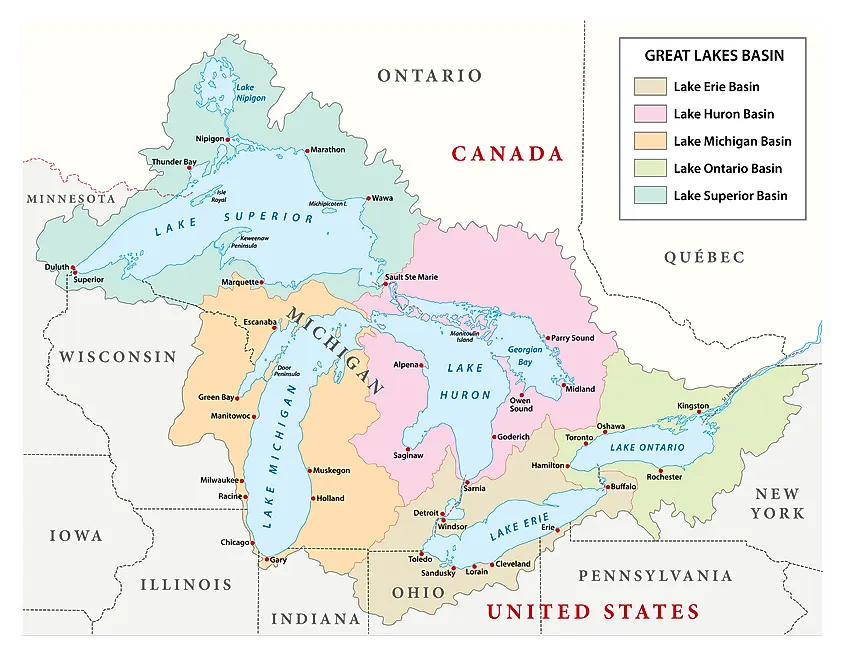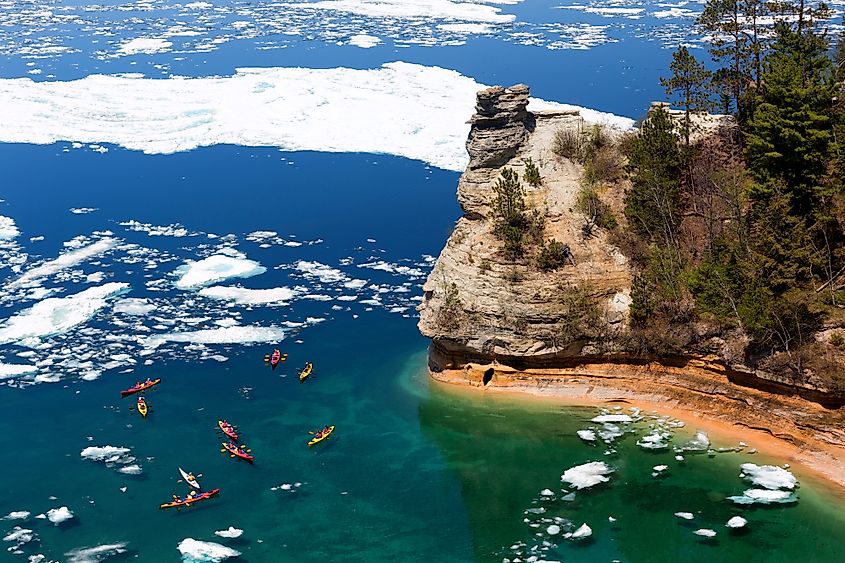
How Were The Great Lakes Formed?
Also referred to as the Laurentian Great Lakes, the Great Lakes is a series of five large interconnected deep freshwater lakes that occupy the east-central portion of the continent of North America. The Great Lakes together cover an extensive area of about 244,106 sq. km and form the largest freshwater body on the planet. The Great Lakes serve as a natural border between the United States and Canada and hold a total volume of about 22,671 cubic kilometers of water. The five Great Lakes include Lake Huron, Lake Ontario, Lake Michigan, Lake Erie, and Lake Superior. Of these five Great Lakes, only Lake Michigan is situated entirely within the United States.
Formation Of The Great Lakes

Geologists have estimated that the foundational geology that set forth the conditions for forming the current Great Lakes started about 1.1 to 1.2 billion years ago. During this time, it is believed that a 2,000km long Midcontinent Rift or Keweenawan Rift was created at the heart of the North American continent due to the splitting of the two previously fused tectonic plates. This event resulted in forming a rift valley and a large basin that finally became the present-day Lake Superior. About 570 million years ago, the Saint Lawrence Rift was formed, which laid the basis for creating Lake Erie, Lake Ontario, and the Saint Lawrence River.
Scientists have also estimated that the present-day Great Lakes started to form approximately 14,000 years ago, at the end of the Wisconsin Glaciation. During Wisconsin Glaciation, the entire Great Lakes watershed was covered by the massive Laurentide Ice Sheet. The huge weight of this enormous ice sheet generated tremendous pressure on the Earth's crust and pushed it downwards. As the ice sheet retreated, the Earth's crust gradually rebounded in a process known as isostatic rebound. As the glaciers covered some areas for longer durations, the glacial rebound occurred at different rates in different regions. The receding and melting of this enormous ice sheet thus created the basic shape of the Great Lakes.

The ice sheet's retreat also led to the formation of several large glacial lakes within the Great Lakes Basin, including Lake Algonquin, Lake Chicago, Glacial Lake Iroquois, Lake Maumee, Lake Duluth Lake Nipissing, Lake Chippewa, etc. Lake Nipissing represents the largest post-glacial lake that occupied the basins of Lakes Michigan, Huron, and Superior. The vast amount of meltwater left behind by the retreating ice sheet eventually filled up the basins carved by the glaciers, leading to the creation of the present-day Great Lakes. Geologists believe that Lake Erie reached its present-day level approximately 10,000 years ago, Lake Ontario about 7,000 years ago, and Lake Huron, Lake Michigan, and Lake Superior about 3,000 years ago. At present, erosion, the rebounding of the Earth's crust, and climate change continue to alter the shape and size of the Great Lakes.











